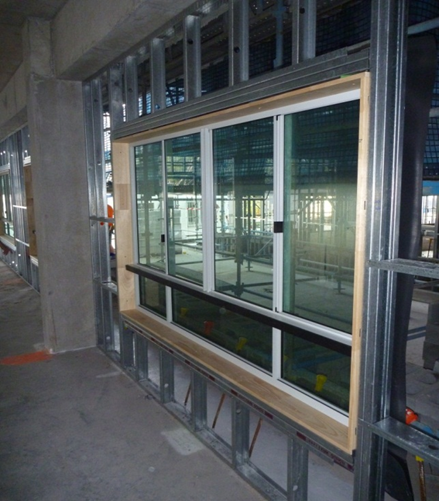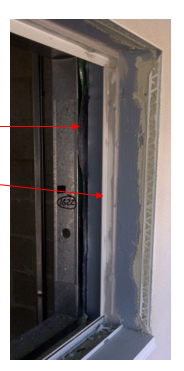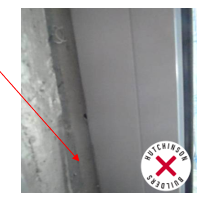- 1 Minute to read
- Print
- PDF
5. Jambs
- 1 Minute to read
- Print
- PDF
5.1 Window jambs and heads designed to channel the water to the sill;
5.2 Cavity construction windows are provided with a 150mm wide sill flashing which is fixed to the window between the window frame and reveals, and this is overlapped outside the building paper that covers the internal frame providing a barrier against water entry.

5.3 Water that enters the cavity cannot cross the cavity. Water that enters the cavity beside the window runs across and down the window jamb flashing and falls to the base of the cavity where it is channelled to the weep holes and expelled from the building

NOTE – head flashing goes BEHIND the sarking, sill and jambs go OVER the sarking (as shown in the photo above. Head flashings are required where the window head is not provided with a 33degree overhang/eave.
Note that where reveal fixed windows are used in multistorey commercial construction that it TREATED pine reveals should be used to prevent termite attack to the timber causing structural failure of window connections
5.4 In Single skin construction the structure substrate is waterproofed as per the sill and then the head channel/jamb angles are fixed to the structure as per the sill – fixings with sealed heads (see previous photo’s)

Above - Top Arrow - the effect of an out of level head - excessive sealant - this needs to be constructed with a double angle - max 8mm sealant.
Above - Bottom Arrow - jamb angle.

Above - hole in sealant joint - these occur regularly - and needs to be sealed prior to allowing the window to be fitted - YOU need to check these - don't assume it's right.

